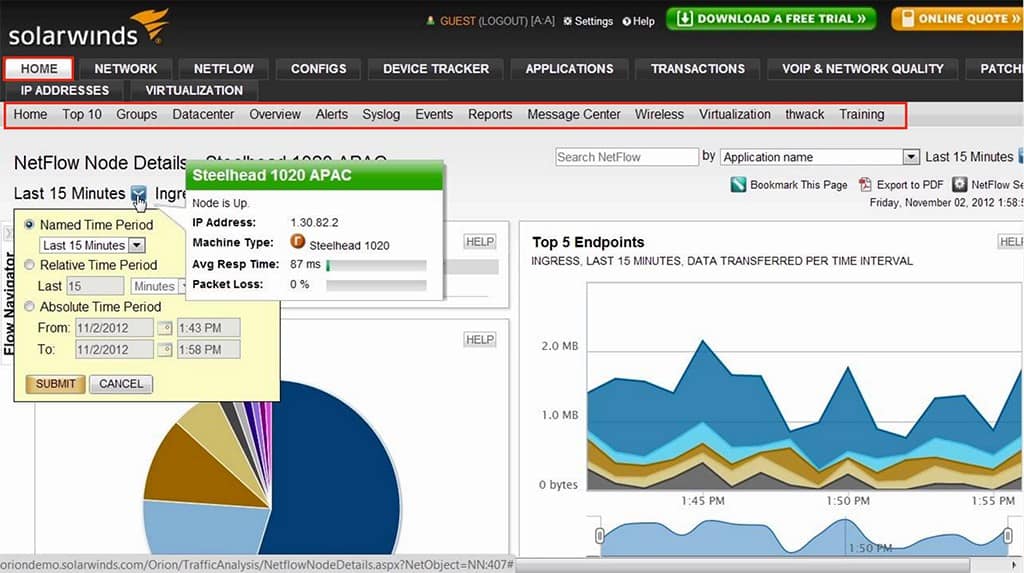Download Solarwinds Orion V9 0 2

Turn Off SSL 3. 0 and TLS 1. Your Browser This article will show you how to disable SSL 3. TLS 1. 0 in your browser. To skip straight to the instructions, click the links below: After the recent POODLE unpleasantness, both Google and Chrome secured their latest browser versions (Firefox 3.
Chrome 4. 0) by barring the use of the SSL 3. POODLE utilizes this protocol as an attack vector. However, the subsequent revelation that TLS 1. TLS 1. 0 is still enabled by default in all three major browsers as of this writing. In this article, we will show you how to protect yourself by forcing your browser to use only the safer TLS 1. TLS 1. 2 protocols.
NOTE: POODLE and similar exploits work when both the server and browser ends of a supposedly safe connection can be tricked into using an obsolete protocol. If you have secured your browser to only use TLS 1. Not to name names here. Internet Explorer. Left- click the gear icon: 2.
Select “Internet options” from the dropdown menu: 3. Click the “Advanced” tab, scroll down and deselect “SSL 3.
TLS 1. 0”. 4. Click “OK” to accept your changes, which should take effect immediately. In the address bar, type “about: config” and hit enter. In the “Search” field, enter “tls”. Find and double- click the entry for “security.
Five top free tools to collect and analyze NetFlow data, understand your network traffic and see who is consuming all your precious bandwidth. This article will show you how to turn off SSL 3.0 and TLS 1.0 in your browser. Over 60 great tools to help network engineers troubleshoot issues before users are affected. Download a 14-day trial and explore all the tools for free!
SolarWind's support center is available to all customers to assist them in resolving support tickets quickly and easily.
Set the integer value to “2” to force a minimum protocol of TLS 1. TLS 1. 2). 4. This configuration will now show the new value and will take effect immediately (don’t forget to clear your cache). Chrome. Science marches on! A massive tip of the hat (or tip of the massive hat) to commentator John Giles for pointing out that using chrome: //flags/ is the latest and easiest way to set the minimum protocol version in Chrome.
We must note that Google hangs a red warning over using flags – however, our testing has yielded positive results. John says: For Chrome, how about this?: chrome: //flags. Under “Minimum SSL/TLS version supported.”, change from “Default” to “TLS 1. This can be implemented by setting up a shortcut as we will show you below, but note that ONLY starting Chrome from this shortcut will prevent use of insecure protocols. To create a secure shortcut: 1. Right- click on your desktop and select “New”, then “Shortcut”.
In the “Create Shortcut” panel, browse to the location of your Chrome installation and select the Chrome icon – the default location is: “C: Program Files (x. Google. Chrome. Applicationchrome. Add the following command line switch –ssl- version- min=tls. C: Program Files (x. Google. Chrome. Applicationchrome. Make sure and separate the switch from the location with a space. Name the shortcut (SSL.
Finish”. 5. Again, the only way to be certain that your Chrome session is secure will be using your new shortcut. Billing Software Open Source Java on this page.
Dante- Gesellschaft M. Das Thema war . Werner von Siemens Gymnasiums (1. Preis, Dozentin: Frau Anette Gilbers) sowie des St.
Anna Gymnasiums (3. Preis, Dozentin: Frau Susanne Oettler). Platz: Safa Baki, Eva Jezovnik, Leonie Kreiner und Seren Tunca.
Platz: Yara Heydholph, Magdalena Mihalijevic, Marlene Raab und Chiara Wei. Platz: Paul Daigeler, Tom Koula, Vittoria Salerno. Ein Trostpreis ging an das St. Louise Schr. Mai bereits ausgebucht! Weitere Anmeldungen k.